Tom's Guide Verdict
The stylishly retro Fujifilm Instax Mini 40 is easy to use, takes vibrant photos, and costs less than $100. What more could you want from an instant camera?
Pros
- +
Excellent image quality
- +
Easy to use
- +
Good automatic exposures
- +
Cool retro look
- +
Shoots Instax mini film
Cons
- -
Film can be pricey
- -
More expensive than other Instax Mini cameras
- -
No creative modes
Why you can trust Tom's Guide
Viewfinder: 0.37x, with target spot
Lens: 2 component f/12.7 with 2 elements
Focusing capability: 0.3m - ∞ (selfie mode 0.3-0.5m)
Automatic exposure: Yes
Speed: Programmed electronic shutter, 1/2 to 1/250 secs
Flash: Yes (constantly firing)
Flash refresh time: 6.5 seconds
Power: 2AA batteries
The Fujifilm Instax Mini 40 is an easy-to-use instant camera that prints photos on credit-card sized Instax film with a cool retro style.
Specs-wise it’s identical to the Instax Mini 11 that came out last year, but the design elements on the Mini 40 make it feel aimed at a slightly more mature demographic than the brightly colored Mini 11.
We've spent a few days shooting with the Instax Mini 40 to see how it performs and whether it's worthy of a place in our best instant cameras list. Spoiler: yes, it is. Read on for our full review of the Fujifilm Instax Mini 40 to find out what we liked about it.
- Also take a look at the best cameras overall
- And these are the best cheap cameras right now
Fujifilm Instax Mini 40 review: Price and availability
The Fujifilm Instax Mini 40 is available now, priced $100. The Instax Mini film costs $13.95 for 20 shots, and Fujifilm has also introduced a new Contact Sheet version, with black border and red lettering, priced $15 for 10 shots.
Fujifilm Instax Mini 40 review: Design
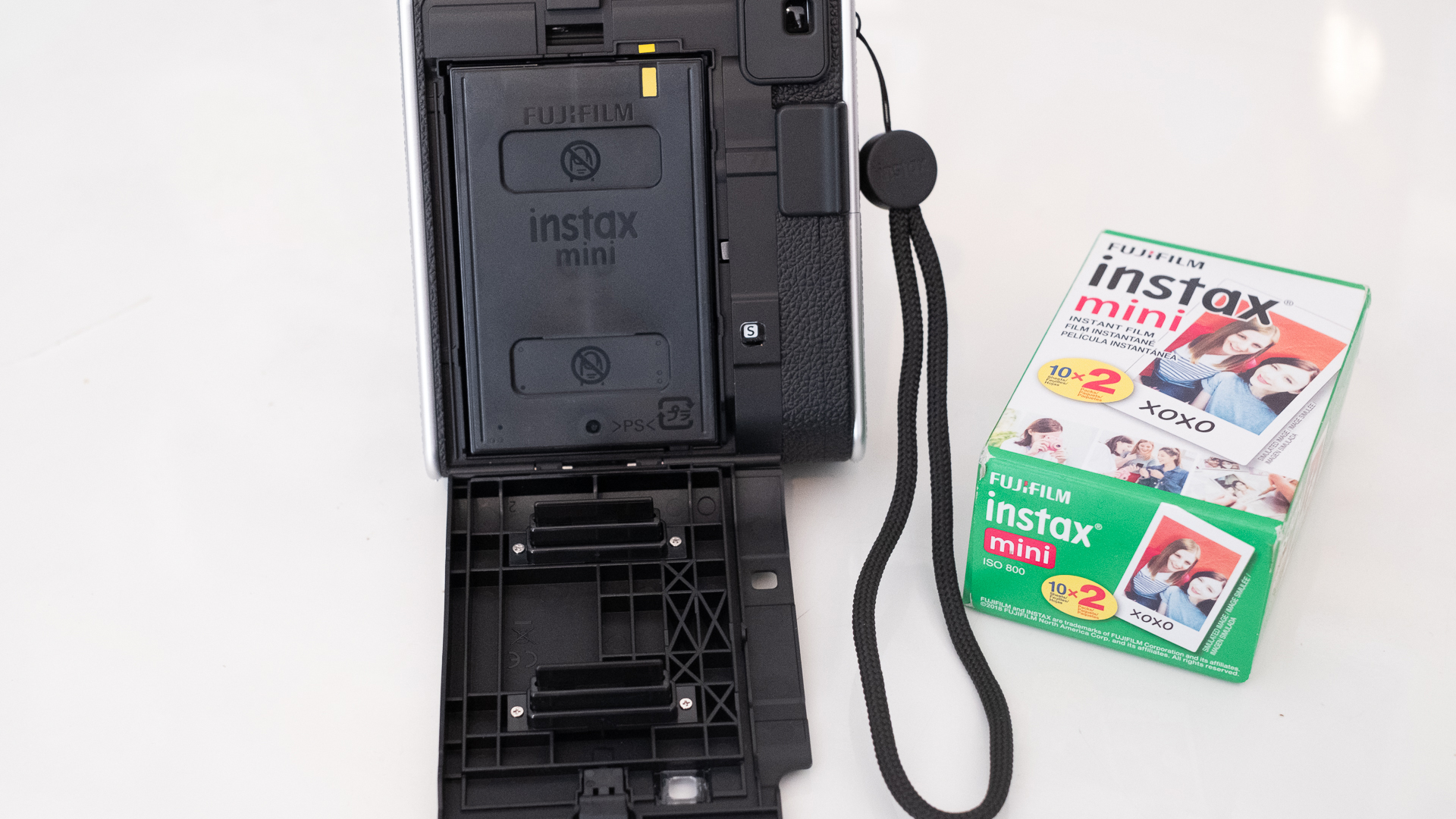
The Instax Mini 40 is black and silver with a faux black leather detailing that's reminiscent of a vintage Leica. It has a familiar boxy shape, and its textured plastic finish makes it comfortable in-hand. A flash sits beside the viewfinder and the shutter button sits below that. The lens is released by pressing a button on the lower right-hand side of the camera.
Being an instant camera, you'll obviously need to load film into it; this is done at the back of the Mini 40, where you'll also find a comfortable place to rest your thumb. A small film counter can be found here too, so you can see how many shots you have left in your film pack.
The camera is powered by two AA batteries, and these slide into a compartment on the right-hand side. It's not a big surprise that the Instax Mini 40 doesn't have a USB-rechargeable battery, but it's still something of a disappointment.
Finally, there's the option to attach the wrist strap on either side of the camera.
Fujifilm Instax Mini 40 review: Lens
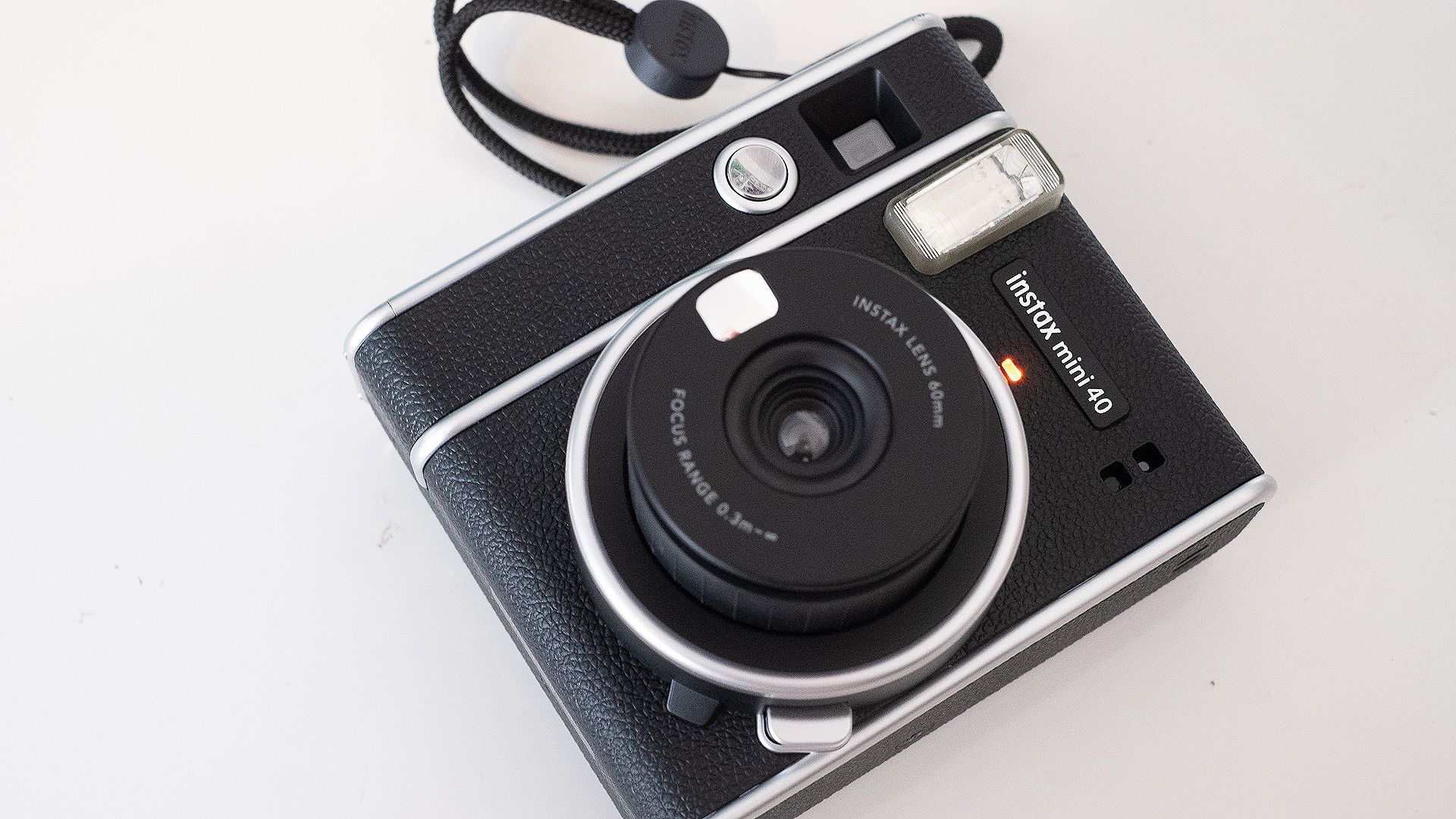
The Fujifilm Instax Mini 40 has a retractable 60mm f/12.7 lens that matches the one on the Instax Mini 11. It's activated by pressing the silver button on the lower right-hand side of the lens, and that mechanism also doubles as the camera's on/off switch.
The lens has a focal length range of 0.3m to infinity, and a field of view equivalent to a 35mm lens. That makes it ideal for shooting everyday life: it's wide enough that you can get several people into a shot, but not so wide that it distorts them.
Fujifilm Instax Mini 40 review: Selfie mode
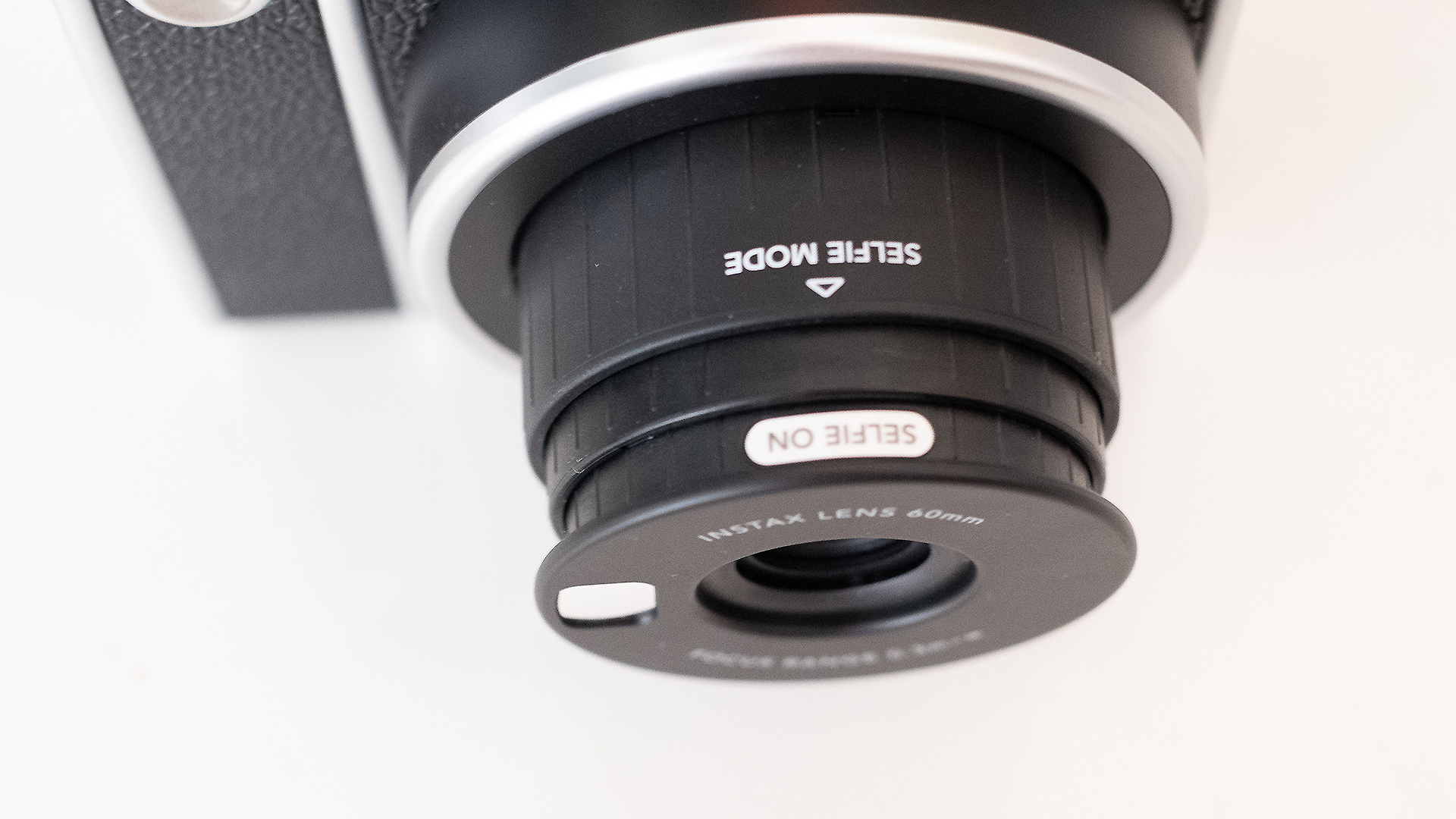
The Fujifilm Instax Mini 40 may revel in its retro looks, but that doesn't mean it lacks any nods to the modern world. To that end, it has a “Selfie mode”, which is activated by pulling the front of the lens outward. Helpfully, it displays the words “Selfie On” when it's engaged, just in case you forget.
A small mirror on the front of the lens allows you to check your framing — and your face — before you fire away. Selfie mode can be used for close-up photography, too.
Fujifilm Instax Mini 40 review: Flash
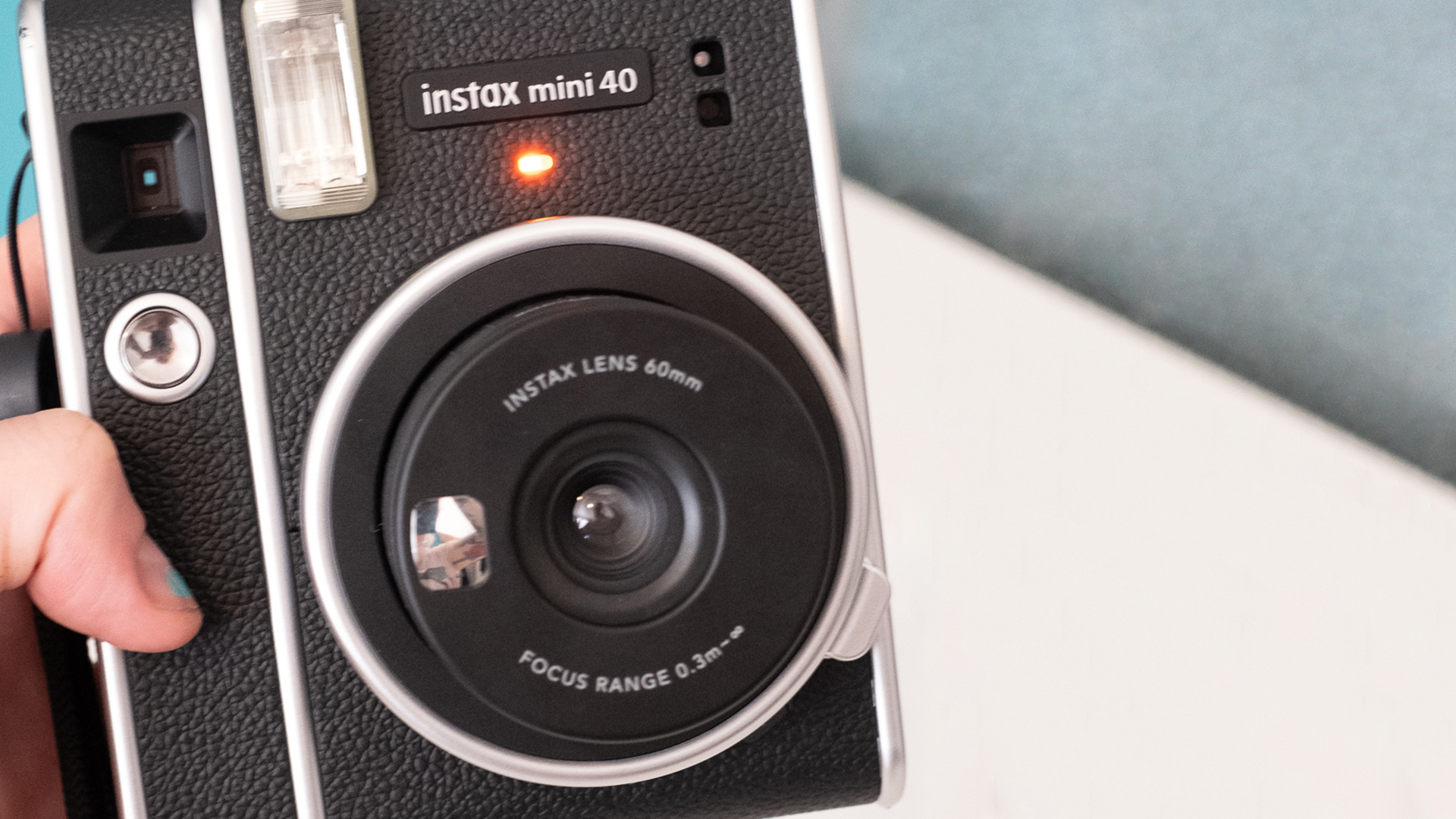
While more expensive cameras typically have a pop-up or clip-on flash, the Fujifilm Instax Mini 40 is a fully automatic camera with a flash that always fires, regardless of lighting conditions. Max flash range is 8.85 feet, although if you're shooting late at night or in dark conditions, exposures will be better when the camera is closer to the subject.
The flash takes a few seconds to recycle, but with a camera like this it’s unlikely that you're shooting very quickly anyway. Look instead to one of the best mirrorless cameras if speed is your primary concern.
Exposure is auto-adjusted with the Mini 40’s variable speed shutter, which ranges from 1/2 to 1/250 seconds, depending on the lighting conditions of your scene.
Fujifilm Instax Mini 40 review: Image quality
As with most instant cameras, the Fujifilm Instax Mini 40 is at its best when used outside in bright, sunny conditions. That said, we were impressed by how well this model worked indoors and late at night: it does a great job at balancing ambient light with the always-on flash, and as long as you're relatively close to your subjects, it works well in most situations.

Instax film gives you 10 shots per pack and typically costs around $15 for a double pack, making it about 75 cents per picture. When you're paying per frame it’s important to have a camera that will consistently nail exposures, so you aren’t burning through film. In our time with the Fujifilm Instax Mini 40, we found that it did just that.
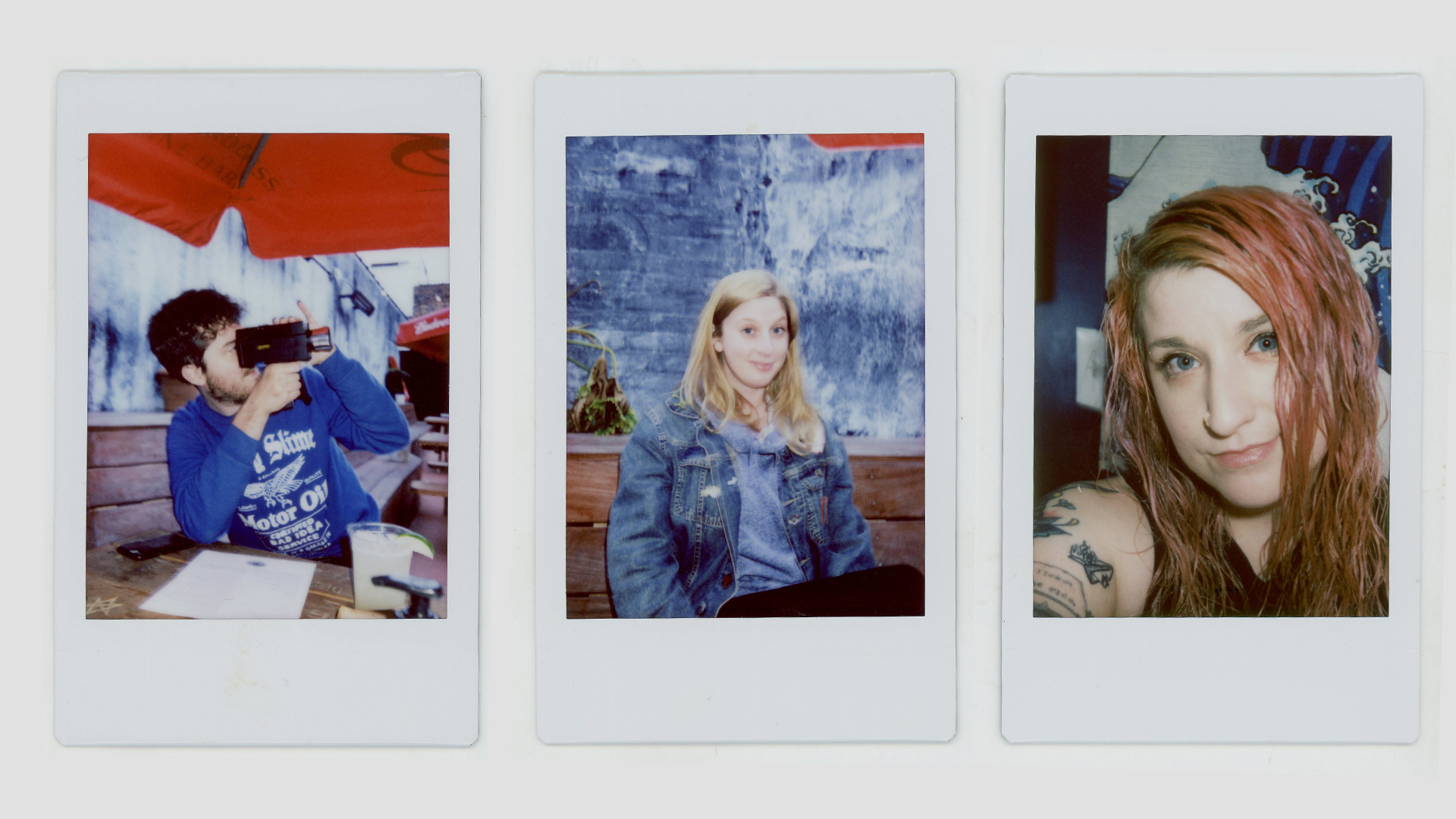
Instax has done an excellent job refining its cameras and film over the past few years to produce consistent exposures with vibrant, aesthetically pleasing colors. We were very happy with the results here.
It's worth noting, though, that photos are sharpest when the subject is close to the camera; it's a great tool for capturing candid portraits, but not necessarily for landscapes or nature photography beyond your pets.
Fujifilm Instax Mini 40 review: Verdict
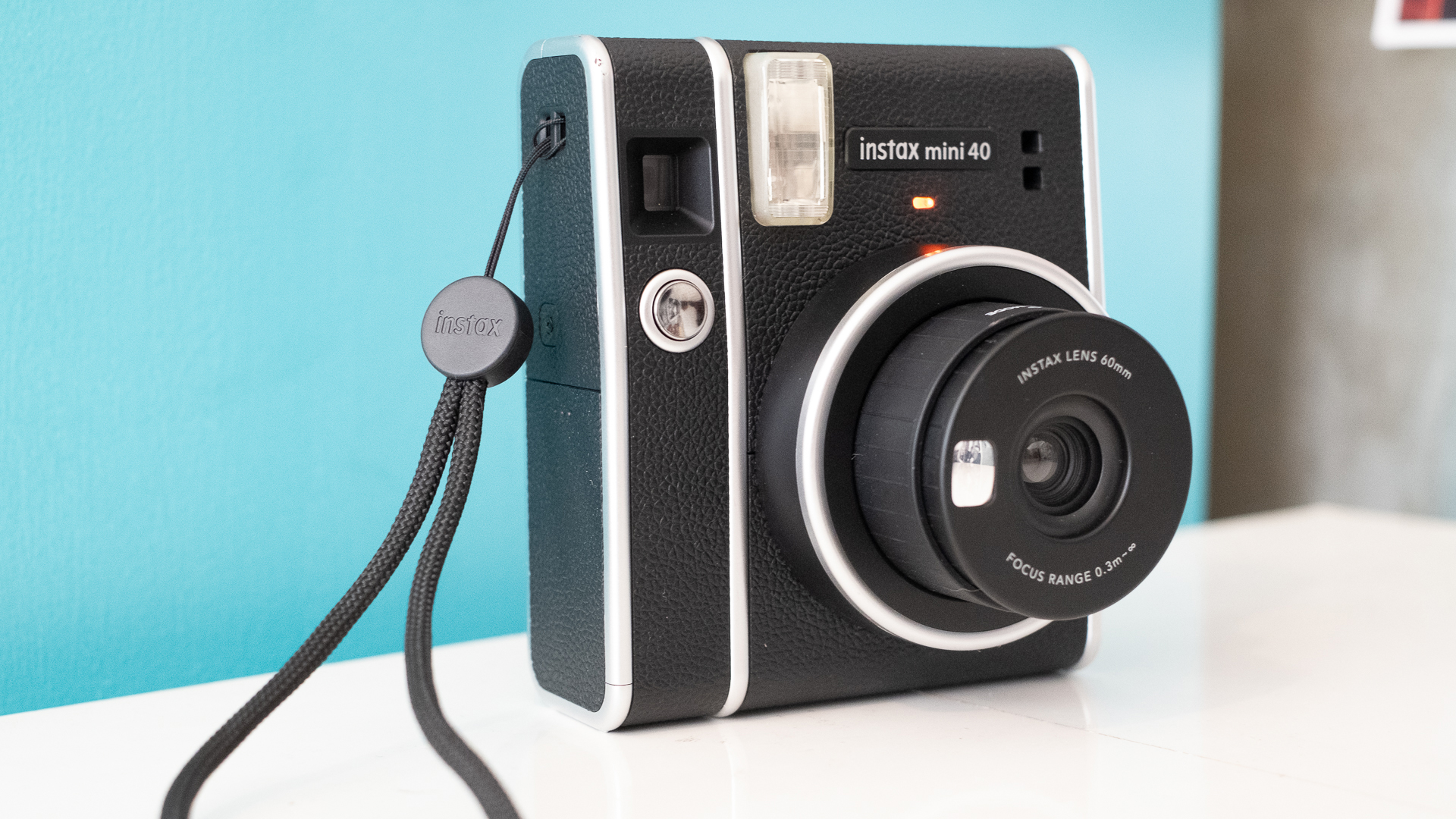
There's a lot to like about the Fujifilm Instax Mini 40. Though it lacks a few of the advanced controls found on some earlier Instax models, it’s incredibly easy to use and has a more adult look than the Instax Mini 11.
Those retro style points will cost you, with the Instax Mini 40 retailing at around $20 more than the identical-in-specs Mini 11, but we'd say it's well worth that extra outlay.
Most importantly, it also produces good looking Instax prints with generally accurate exposures and eye-pleasing colors. The Fujifilm Instax Mini 40 is an instant camera that should appeal to a wide variety of people, and we'd expect anyone using it to get plenty of enjoyment from it.
- More: Our full list of the best instant cameras
- The Fujifilm X-E4 wasn't the camera I wanted — but I am so glad I bought it.

Jeanette D. Moses is a New York based filmmaker and photographer known for capturing the intimacy of New York City's creative communities. She has been freelancing for Tom's Guide since 2020. She loves shooting music, tinkering with new technology, all things analog, and learning about archaic photographic processes. She’s been photographing the music scene in New York City since 2012 and began writing about photography shortly after. In addition to Tom’s Guide, her stories have been published on Pop Photo, DP Review, Digital Photo Pro and The Phoblographer. In 2021 she was selected as one of Dr. Martens Filmmakers of the Year to direct a film about New York City's DIY music scene.

